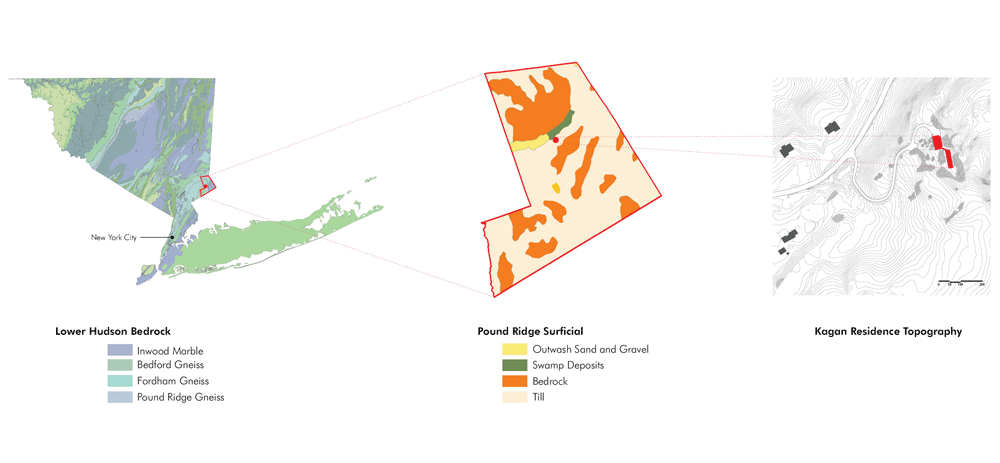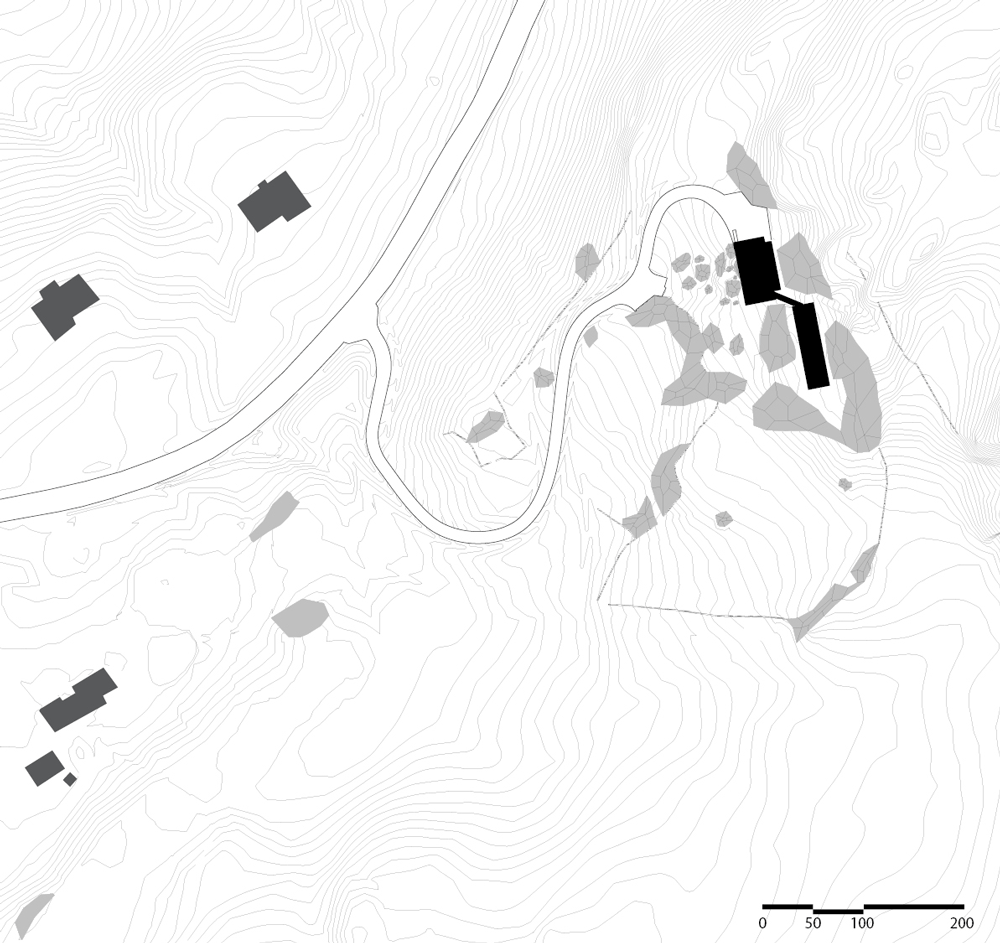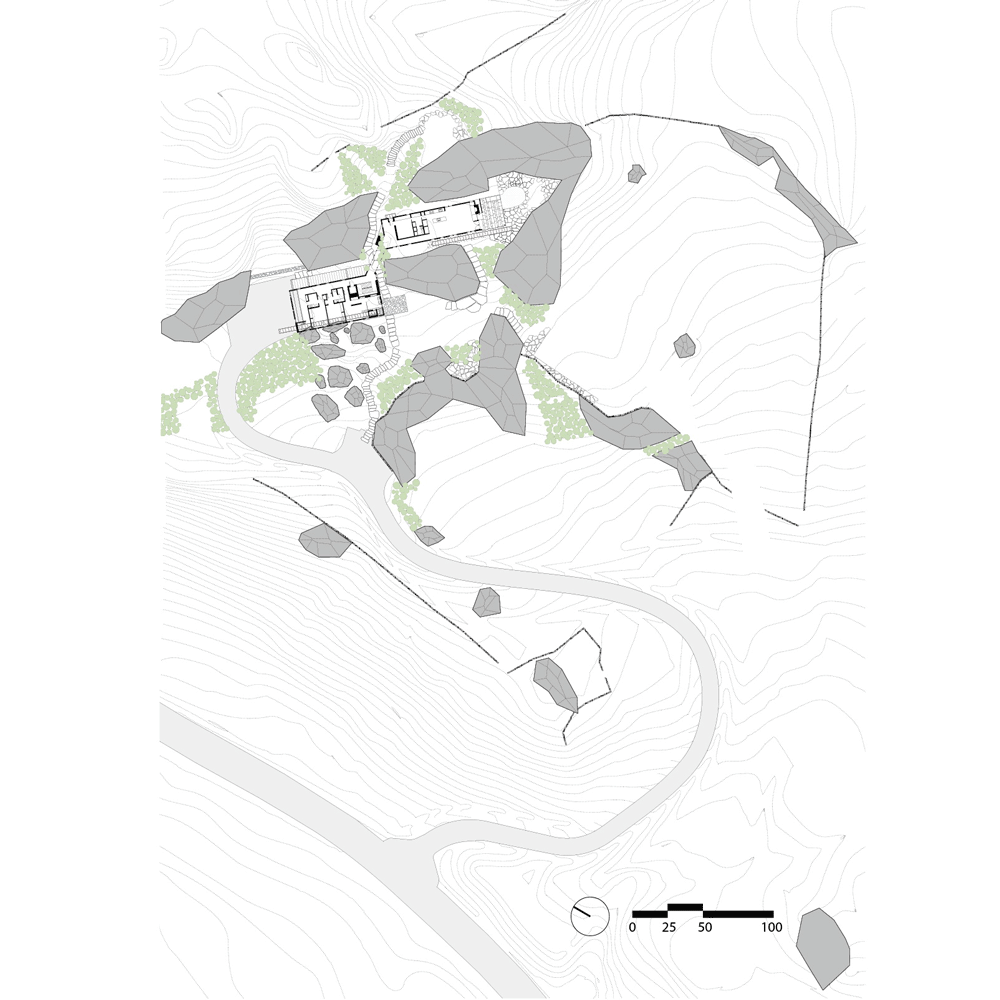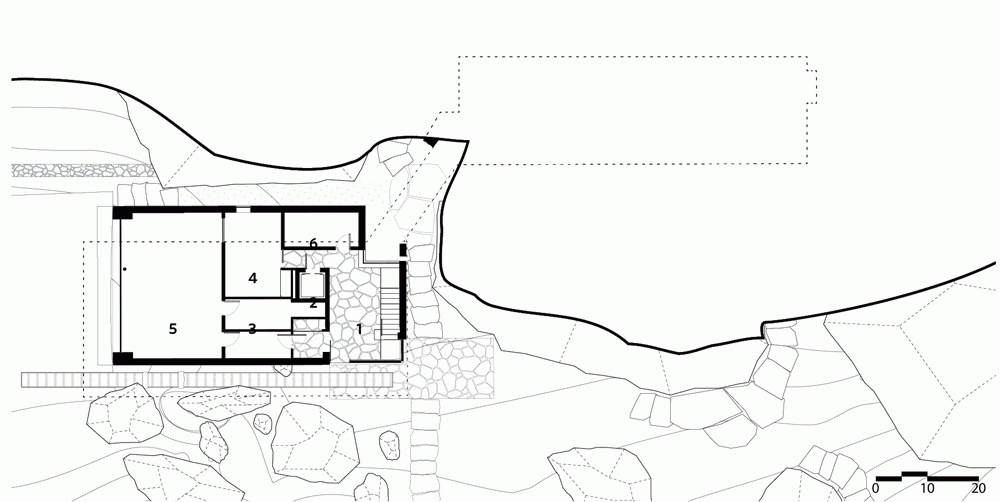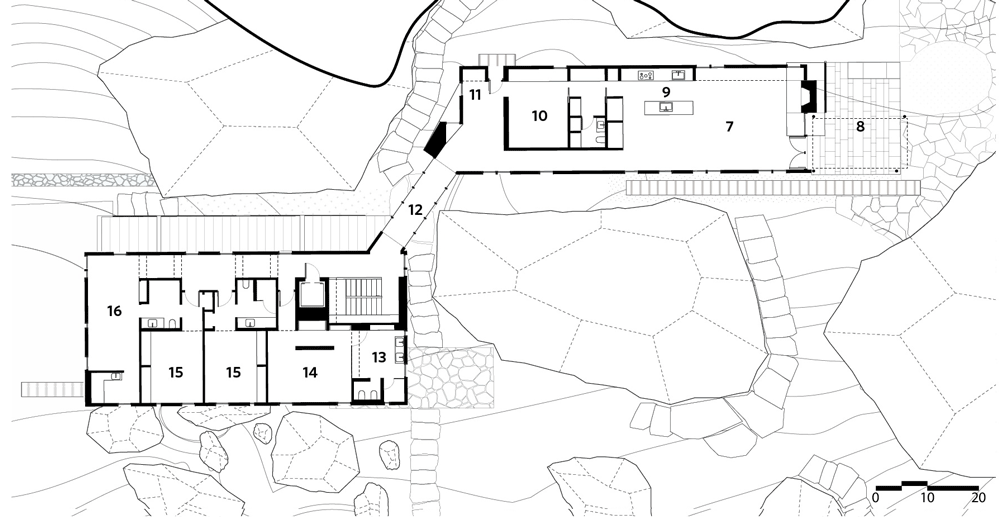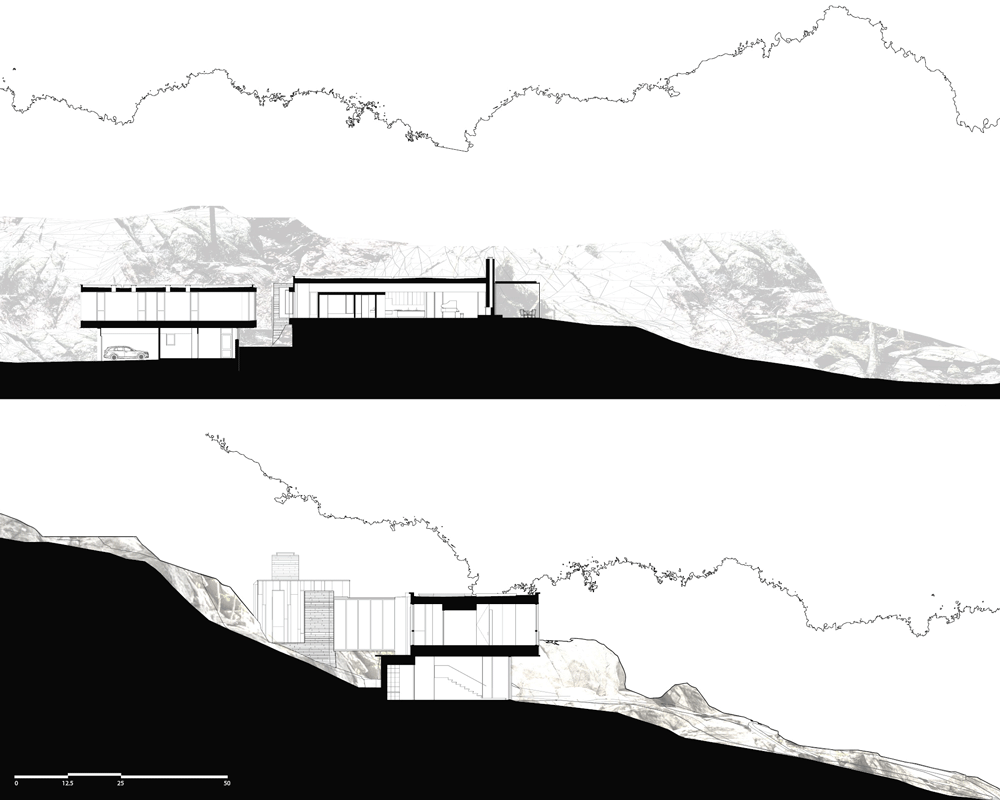Pound Ridge House by KieranTimberlake reflects its surroundings with a mirrored facade
US firm KieranTimberlake has nestled a home into a rocky outcrop in New York State, with mirrored cladding that reflects the forested landscape and sky (+ slideshow).
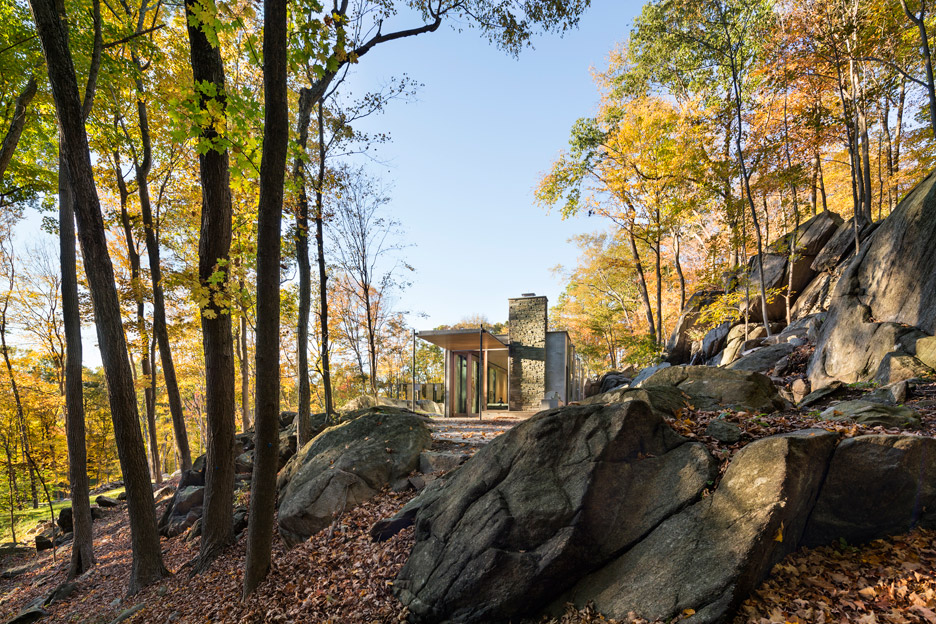
Called the Pound Ridge House, the dwelling is situated on a south-facing site that rises over 100 feet (30 meters) as it ascends from a wetland to the top of a ridge.
The 33-acre (13-hectare) escarpment is strewn with boulders, trees and remnants of old farm walls. It is located in the town of Pound Ridge in Westchester County, which is about 50 miles (80 kilometres) outside of New York City.
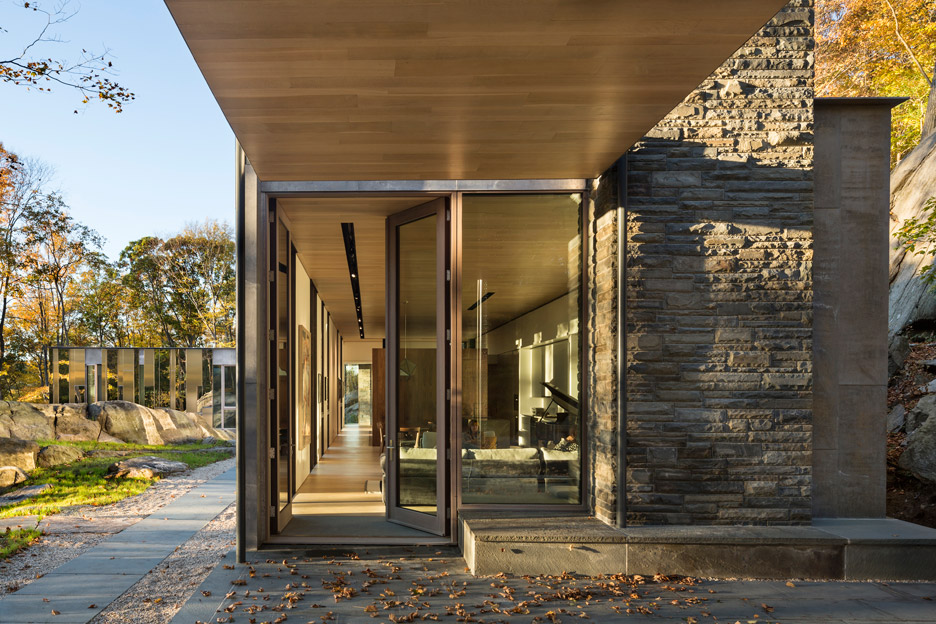
"The owners were drawn to the almost magical sense of tranquillity they felt upon their first visit to this heavily forested land, striped with loose-laid fieldstone farm walls from the 19th century," said KieranTimberlake, which is based in Philadelphia.
"They wanted to live in a 'house in the woods, of the woods' – to feel the presence of the forest indoors and to commune quietly with nature and visit with guests within naturally lit, open, airy, warm rooms," added the firm.

Encompassing 5,250 square feet (487 square meters), the house is nestled into a rocky outcrop located just below the ridge.
The architects describe the plot as having two "rock-enclosed rooms – one positioned below with another space adjoining it above." A small ravine runs between the two.
Within these "rooms", the architects placed two volumes that respond to the site's topography, both in terms of composition and materials.
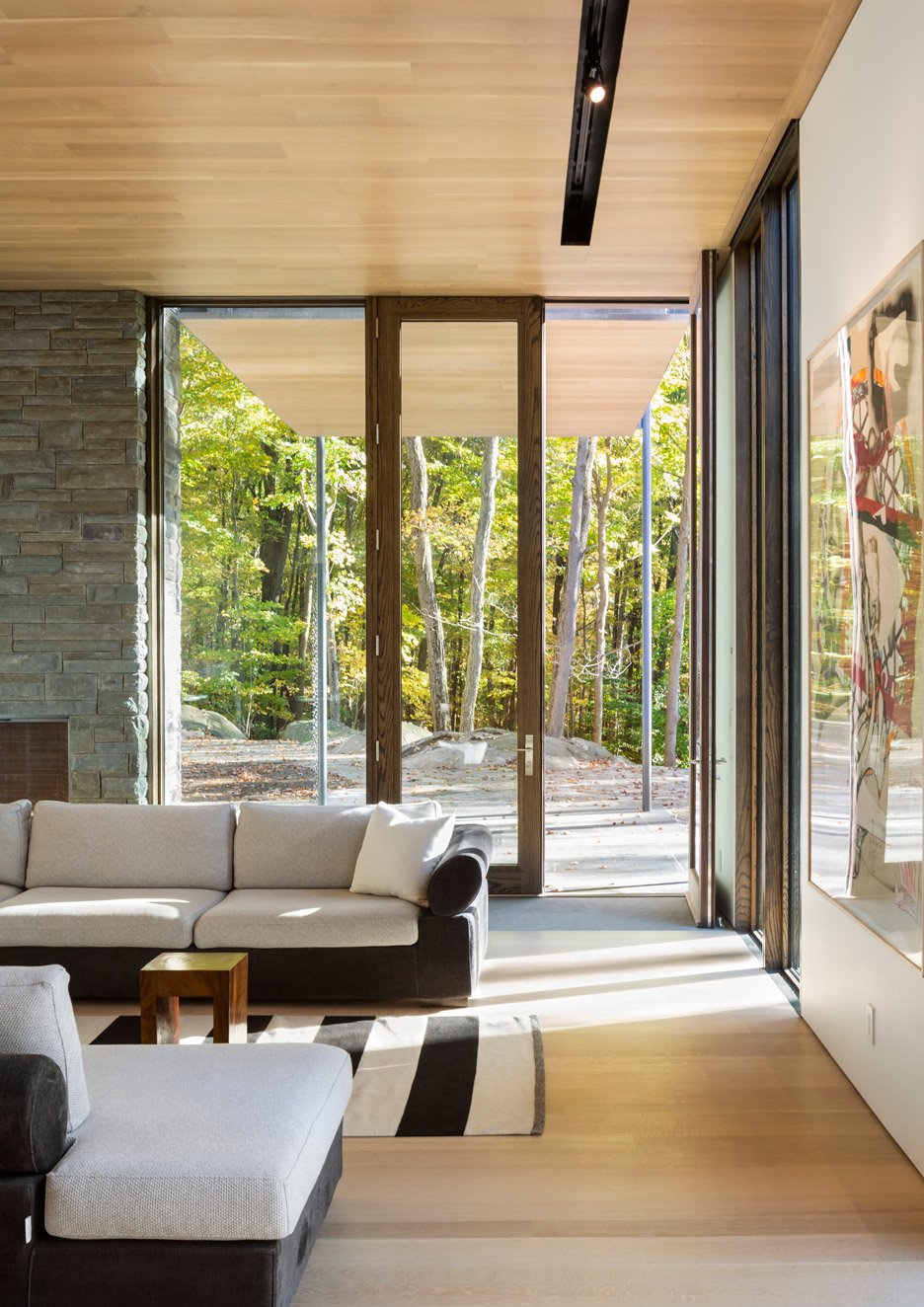
The volumes – one single level, the other double level – are connected by a glass-enclosed bridge.
"In response to the dramatic natural scenery, the house itself employs an economy of design that focuses on harmony with the landscape and elemental materiality," said the firm.
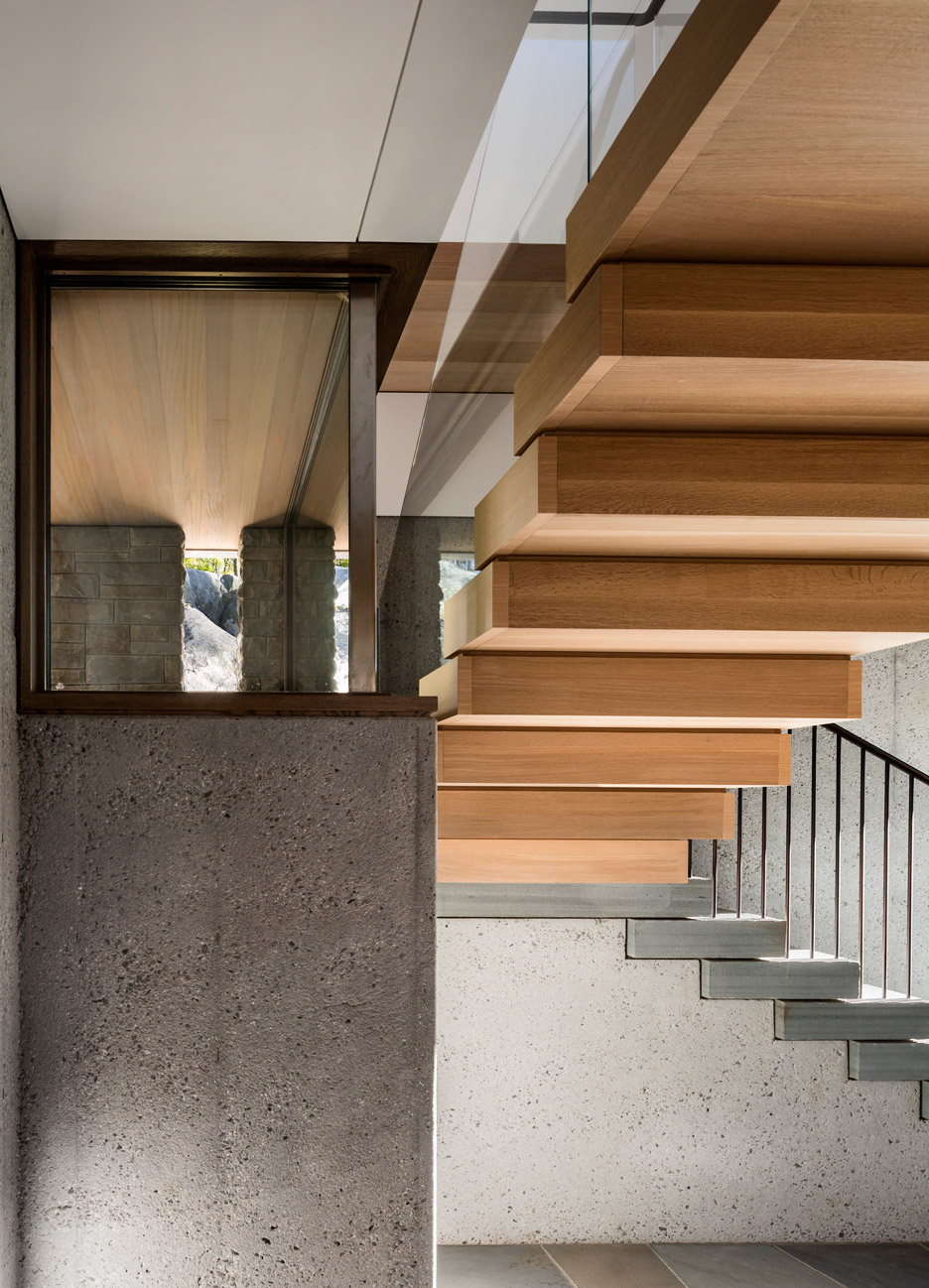
The exterior walls are clad in four different materials: zinc-coated copper, brushed stainless steel, polished stainless steel and glass.
The polished stainless steel – the most prominent cladding – acts as a mirror and reflects the surrounding terrain and sky.
"All materials were selected for long-term durability, and to honour both permanence and change, much as the weathered rock and high forest canopy endure yet evolve with day and season," said the firm.
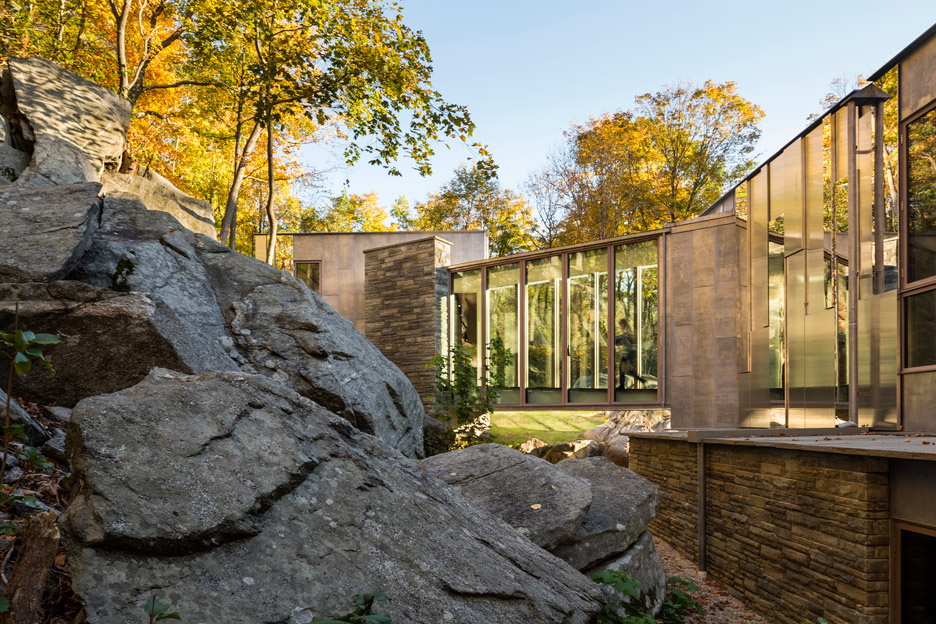
The walls themselves are made of Structural Insulated Panels (SIPs), which help the building retain warmth.
Windows were strategically positioned to capitalise on heat gain in the winter, and open to enable cross-ventilation during warmer months, in turn reducing the need for mechanical cooling.
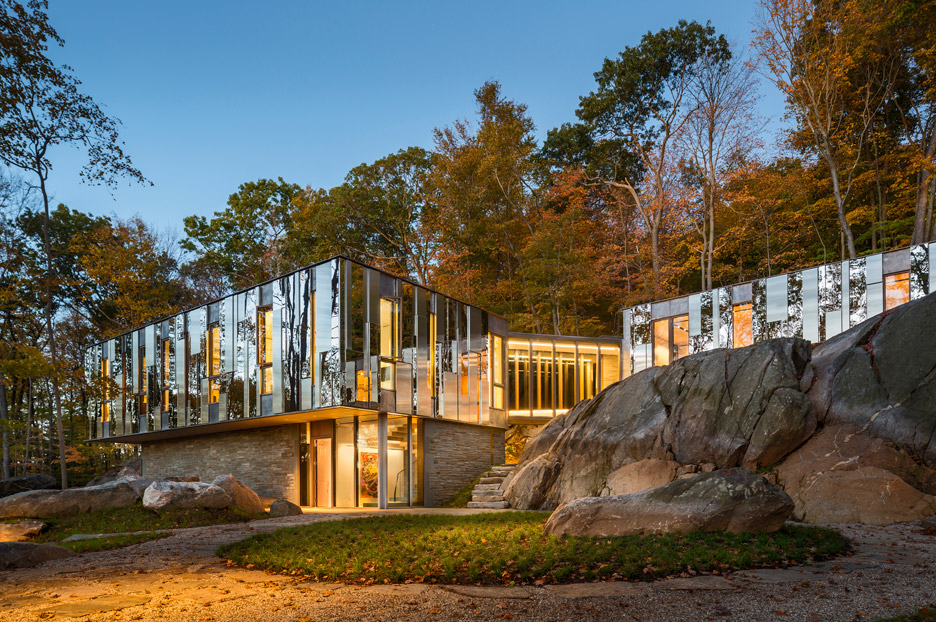
The single-level volume contains a living room, dining room, kitchen, small bathroom and media space. Outside, an outdoor terrace is covered by a wood-lined canopy.
The upper level of the two-story volume serves as a bedroom wing. Windows and skylights usher in bands of natural light. The lower level houses a garage, workshop, wine cellar and entry vestibule.
The home is accessed via an entry driveway that wraps around a small pond. "The drive up to the home moves across the slope in curving arcs that work with the contour of the land," said the firm.
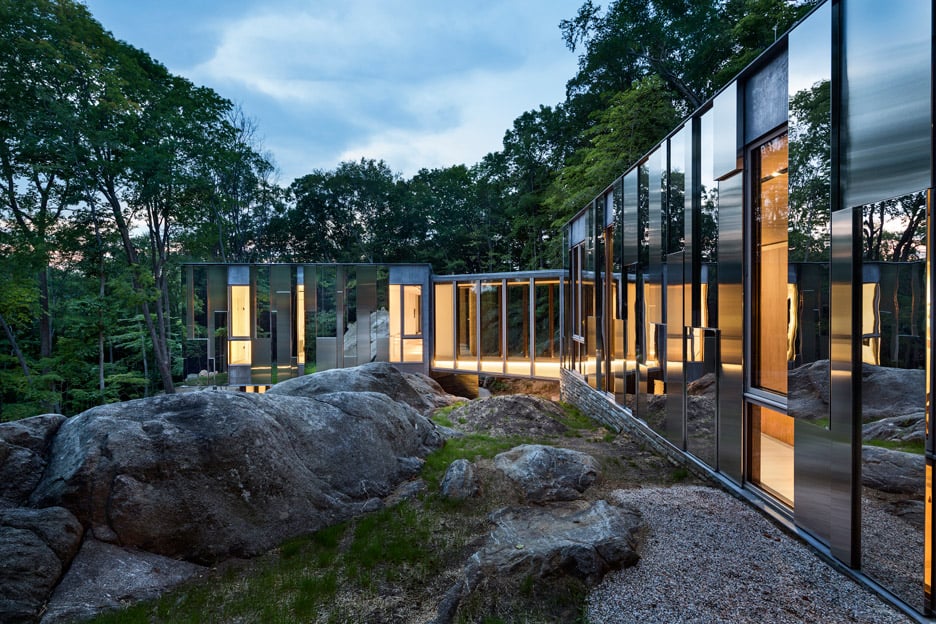
Overall, the home's design is intended to provide a strong connection to the natural world.
"It explores an ethical aesthetic that is both evocative and performative – an aesthetic that aims first and foremost to induce wonder at both the timelessness and flux of the natural environment in which we live," said the firm.
Other recent projects in rural New York include a glass-box home by architect Jay Bargmann and a wood-clad dwelling by Foz Design.
Photography is by Peter Aaron at OTTO. All drawings are by KieranTimberlake.
